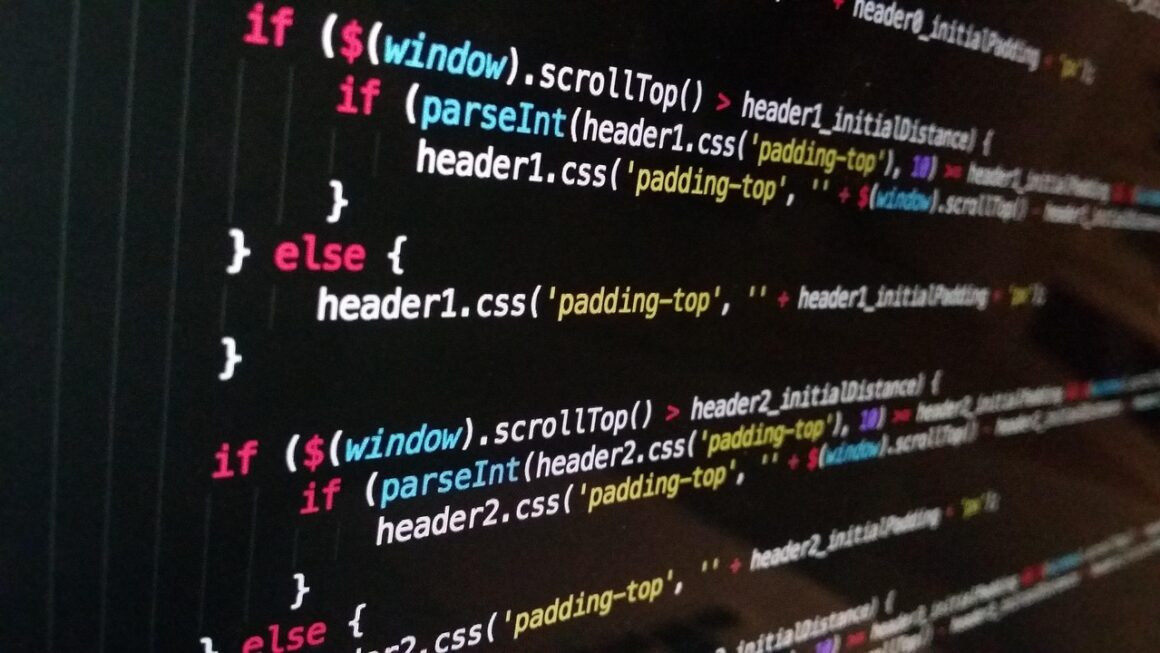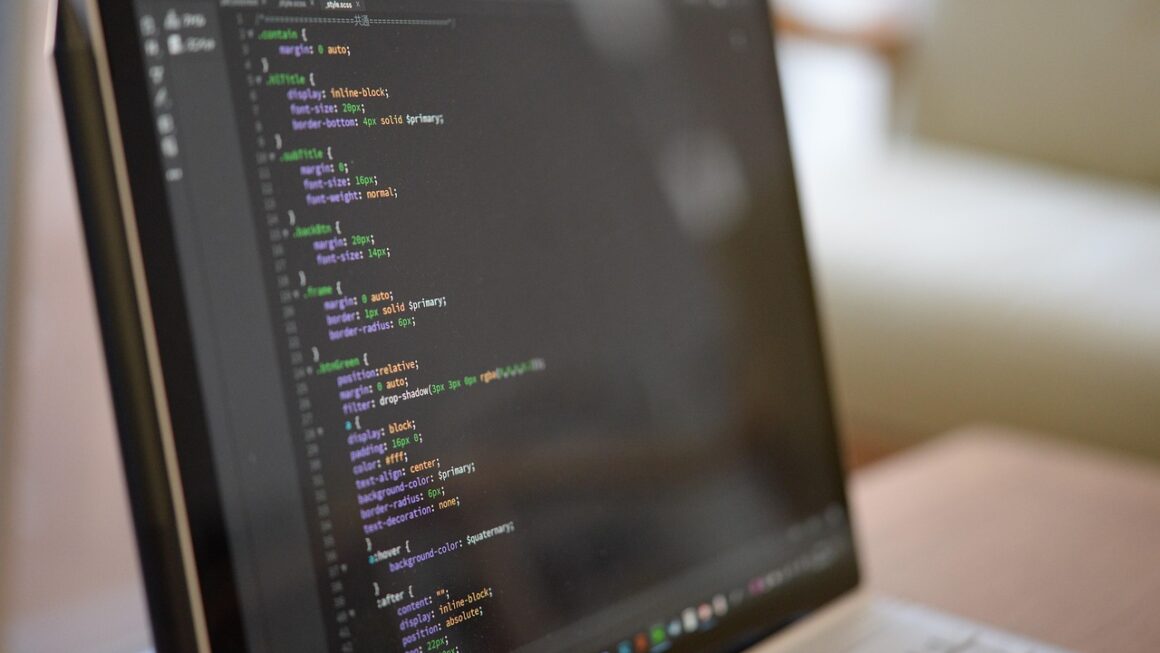AI is rapidly transforming the software development landscape, and full-stack developers are at the forefront of this revolution. From automating repetitive tasks to generating code snippets and even assisting in debugging, Artificial Intelligence tools are becoming indispensable for boosting productivity and efficiency in building and maintaining complex applications. This blog post explores how AI is currently being used in full-stack development, the benefits it offers, and what the future holds for this powerful combination.
The Rise of AI-Powered Code Generation
AI Assisting in Front-End Development
AI models like GPT-3 and its successors are capable of generating HTML, CSS, and JavaScript code based on natural language descriptions or visual designs. This allows developers to quickly prototype user interfaces and reduce the time spent on boilerplate code. For example, a developer could input “Create a responsive navbar with a logo on the left, a search bar in the middle, and user profile icon on the right,” and an AI tool could generate the corresponding code.
- Benefits:
- Faster prototyping and UI development
- Reduced manual coding efforts
- Improved code quality through AI-driven suggestions
Practical Example: Imagine you need to quickly create a landing page. Using an AI-powered code generation tool, you could describe the desired layout, including elements like a hero section with a call to action, feature blocks, and a footer. The AI could then generate the HTML, CSS, and basic JavaScript structure, saving you hours of manual coding.
Back-End Code Automation with AI
AI is also making significant strides in back-end development. AI-powered tools can assist in tasks such as generating API endpoints, writing database queries, and even creating entire microservices based on specifications. These tools can analyze existing codebases, learn patterns, and then apply that knowledge to generate new code, adhering to coding standards and best practices.
- Benefits:
- Accelerated API development
- Simplified database interactions
- Automated microservice creation
Practical Example: Let’s say you need to build an API endpoint for user authentication. Instead of writing the code from scratch, you could use an AI tool to generate the endpoint, including user validation, password hashing, and token generation. The AI can also handle error handling and security best practices, reducing the risk of vulnerabilities.
Automating Testing and Debugging Processes
AI-Driven Automated Testing
Testing is a crucial part of the software development lifecycle, and AI is revolutionizing this area. AI-powered testing tools can automatically generate test cases, identify potential bugs, and even predict areas of the code that are more likely to have issues. This reduces the amount of time developers spend on manual testing and improves the overall quality of the software.
- Features:
- Automatic test case generation
- Intelligent bug detection
- Predictive code analysis
Practical Example: An AI-powered testing tool can analyze your code and automatically generate unit tests, integration tests, and even end-to-end tests. These tests can cover a wide range of scenarios, ensuring that your application is robust and reliable. The AI can also learn from previous test results and prioritize tests that are more likely to uncover bugs.
Intelligent Debugging Assistance
Debugging can be a time-consuming and frustrating process. AI can help by analyzing code, identifying potential errors, and suggesting solutions. AI-powered debuggers can understand the context of the code, trace execution paths, and pinpoint the root cause of bugs more quickly and accurately than traditional debugging methods.
- Benefits:
- Faster bug identification
- Improved code understanding
- Reduced debugging time
Practical Example: If your application is throwing an exception, an AI-powered debugger can analyze the stack trace, identify the line of code that caused the exception, and suggest possible fixes based on similar errors encountered in other projects. The AI can also provide context-aware suggestions, helping you understand the impact of the error on other parts of the application.
Enhancing Code Quality and Maintainability
AI-Powered Code Review
Code review is an essential practice for ensuring code quality, but it can be time-consuming and subjective. AI-powered code review tools can automate much of this process by analyzing code for potential issues such as security vulnerabilities, performance bottlenecks, and coding style violations. These tools can provide developers with automated feedback, helping them to write cleaner, more maintainable code.
- Key aspects of AI-Powered Code Review:
- Automated identification of code smells
- Detection of security vulnerabilities
- Enforcement of coding standards
Practical Example: An AI-powered code review tool can analyze your code and automatically identify potential security vulnerabilities, such as SQL injection or cross-site scripting (XSS) vulnerabilities. The tool can also suggest fixes and provide explanations of the vulnerabilities, helping you to write more secure code.
Refactoring and Optimization Suggestions
AI can also assist in refactoring and optimizing code. AI-powered tools can analyze code for potential performance bottlenecks, identify areas where code can be simplified, and suggest refactoring strategies to improve the overall structure and maintainability of the code. This helps developers write more efficient and scalable applications.
- Benefits:
- Improved code performance
- Simplified code structure
- Enhanced maintainability
Practical Example: An AI-powered refactoring tool can analyze your code and suggest ways to optimize it for performance. For example, the tool might suggest replacing a loop with a more efficient data structure or optimizing database queries. The tool can also provide metrics to show the performance improvements achieved through refactoring.
The Future of AI in Full-Stack Development
Low-Code/No-Code Platforms with AI Integration
Low-code and no-code platforms are becoming increasingly popular, and AI is playing a key role in their evolution. AI-powered features can automate many of the tasks involved in building applications on these platforms, making it easier for non-developers to create and deploy software. This trend is expected to accelerate in the future, further democratizing software development.
AI-Driven Project Management
AI can also be used to improve project management in software development. AI-powered project management tools can analyze project data, predict potential risks, and suggest strategies to mitigate those risks. These tools can also automate tasks such as task assignment, progress tracking, and reporting, freeing up project managers to focus on more strategic activities.
Conclusion
AI is rapidly changing the landscape of full-stack development, offering developers powerful tools to automate tasks, improve code quality, and accelerate the development process. From AI-powered code generation and testing to intelligent debugging and code review, AI is becoming an indispensable part of the modern full-stack developer’s toolkit. As AI technology continues to evolve, we can expect to see even more innovative applications in the field of software development, further enhancing productivity and efficiency. Embracing AI in your full-stack development workflow can provide a significant competitive advantage in today’s fast-paced technological world. By leveraging these tools, developers can focus on innovation and creating value, ultimately delivering better software faster.




